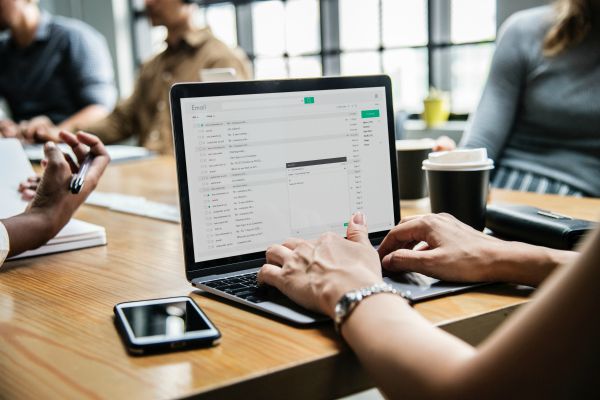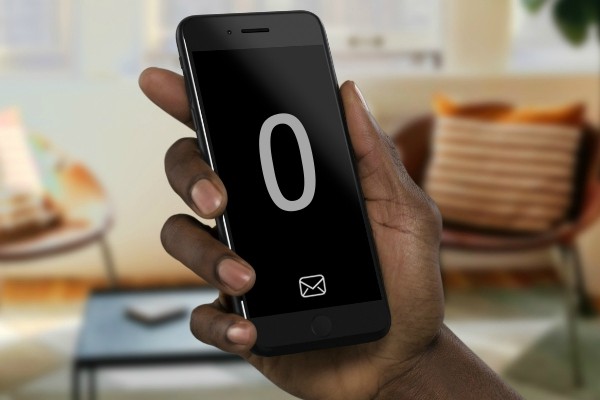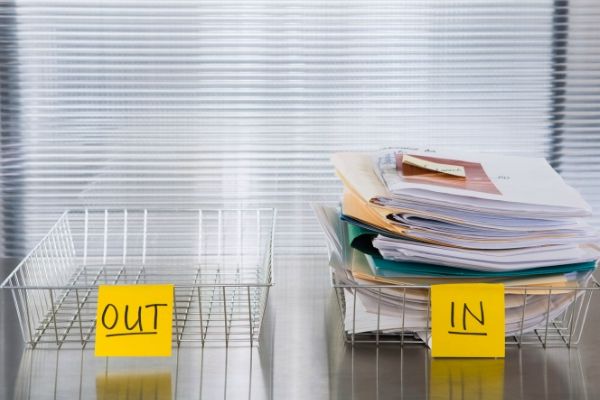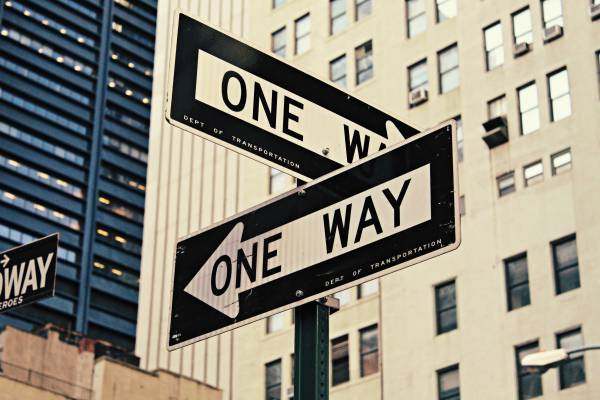When was the last time your email organization was top notch? Was it in January, when—at the turn of the new year—you decided to Marie Kondo your Gmail and start 2019 with a proverbial clean slate? Or perhaps it was late one night in October when you realized, too late, that you had missed a time-sensitive request from your boss—swallowed whole by the sea of J.Crew promotions you’d only neglected the day before?
We’ve been there. In fact, sometimes we’re still there. But what if this whole email organization thing was a waste of your time? What if there was a better way to tackle your inbox that left your brain free to focus on actual work? And what if that strategy was shockingly easy?
Let’s dig into a radical email organization strategy, share our opinion on whether it can work or not, and give you some easy tips to put it into practice.
Our Email Organization Obsession

But first, let’s talk about our obsession with email organization. Ever since Merlin Mann coined the phrase “Inbox Zero” back in a Google Tech Talk in 2007, the bar for email organization has been set fiercely high. But Mann didn’t actually intend for our inboxes to be totally clean and clear. Rather, he was referencing brain capacity or “the amount of time an employee’s brain is in his inbox.”
Mann’s ideology makes sense, of course. He explains that most of us get into the habit of checking our messages regularly. But we don’t actually take action on them until they’ve piled up, thereby causing us unnecessary stress. By “processing to zero”—or acting on each message with a reply, a to-do list entry, etc. until no emails remain—Mann says we can relieve our anxieties and essentially reach inbox nirvana.
Is Inbox Zero Realistic?

But how sustainable is the “inbox zero” process, really? In an increasingly noisy world, Mann’s organizational doctrine is certainly alluring. And sure, there’s a sense of instant gratification that comes from acknowledging every email that comes your way. But anyone who has fully cleared their inbox knows how fleeting that homeostasis can be, lasting only until the next flood of email advertisements and coworker queries start pouring in.
In fact, new data shows that 24 percent of Americans think reaching “inbox-zero” is actually not possible at all. And considering we send and receive billions of emails a year (269 billion a day in 2017, to be exact), it’s hard to disagree. Consulting firm McKinsey estimates that workers there spend almost 30 percent of their entire week attempting to reach inbox zero. But is it worth it?
If the reason you have unanswered emails is that you were busy working on other timely matters, does the size of your inbox even matter? After all, your brain isn’t built to split its attention in too many directions simultaneously. A recent study from researchers at the University of British Columbia found that when people were limited to checking their email just three times per day, their stress levels decreased significantly. So is a neglected inbox actually the way to go?
“Inbox Infinity”: A Radical Solution to Email Organization

In a recent article published by The Atlantic, writer Taylor Lorenz acknowledges the impossible paradox of spending countless hours in the quest for an empty inbox, while also dedicating a sufficient amount of time to other tasks at hand. Instead of subscribing to “inbox zero,” the writer makes a case for what she calls “inbox infinity.”
Adopting inbox infinity means accepting the fact that there will be an endless, growing amount of email in your inbox every day, most of which you will never address or even see. It’s about letting email messages wash over you, responding to the ones you can, but ignoring most.”
Lorenz isn’t the first person to buy into this idea of inbox infinity. Laura Vanderkam, author of I Know How She Does It, argues that “there is no correlation between having an empty inbox and being successful,” and science seems to suggest she’s right.
For years, I worked tirelessly to combat the incessant flow of emails as they piled up in my own inbox—but maintaining “inbox zero” often felt like an uphill battle. Rather than gain a sense of peace from answering messages, as Mann advertised, I increasingly felt stressed and overwhelmed in my attempt to close the email floodgates.
Recognizing how exhausting it was for me to constantly keep tabs on my email, I slowly chose to, instead, refocus that inbox-clearing energy on other tasks, and found that I actually wrapped my day feeling more productive and generally less anxious when I did.
How to Buy Into Inbox Infinity…Without Getting Fired

Understandably, the line between shrugging off your growing inbox and not missing important messages can feel thin. So here are a few easy email organization tips that let you maintain “inbox infinity” without dropping the ball on your responsibilities altogether.
1. Manage expectations

The key to not obsessing over your email is to manage expectations: Both your own and the expectations of others. If you’re going to give your inbox some breathing room, so to speak, you’ll need to alert friends, family, and colleagues that email may not be the most efficient way to keep in touch. If everybody is on the same page, you’ll feel less anxious about not getting back to someone right away.
Lorenz suggests messaging close contacts first and providing them with alternative ways to reach you. “A friendly message to relatives might say, ‘Hi, I’m overwhelmed with email these days. I’d still love to hear from you, but if you want to reach me, I’d much prefer a call on the phone. My number is X.’,” she says.
As for the rest of your contacts, setting up an out-of-office response is a great way to maintain your professionalism and keep your network in the know. By phrasing the message in a way that implies you may be “slow to respond,” you can ensure your connections that important messages will receive a response (just not necessarily at the drop of a hat), and you will feel less stressed for having given them a heads up.
2. Set up a filter

Obviously, not everyone can ignore their emails completely. Some messages will warrant a timely reply, and the key here is finding out which messages those are in an efficient way (one that doesn’t leave you scrolling for hours on end). Email organization apps like Spark do the sorting for you, prioritizing your emails so you can check your important messages when you want while ignoring the less important messages along the way.
Organizing your inbox will get you right to the important stuff, without worrying about what you may have missed.
3. Only answer what’s important

For the few times you do plan to check your email, make it the most productive by only reading the important messages. An easy way to do this is to give your less-than-urgent emails a home, so you can go back to them later (if at all). Products like Zapier give you the ability to delegate certain emails through the app’s “zap” feature. Setting up a “zap” will automatically save specific kinds of emails to a separate Evernote notebook, creating “to do” lists by default.
Programs like Boomerang and Followup.cc also allow you to schedule emails and send reminders so you can deal with emails on your own time.
To sum it all up…

Today, I have 2,931 unread messages in my Gmail account (yes, really). But you know what? I feel more productive than ever. Of course, what works for me may not work for everyone. While I may find sporadic inbox negligence the most efficient approach to managing my time, the quest for inbox zero may feel worth it to others.
Whatever your comfort level with email inbox awareness, setting guidelines for yourself will help increase your productivity and allow you to live your day mindfully.
Your turn: What email organization strategy do you live by? Share your tips and tricks in the comments.
Need more ways to take on your email? Our inbox hacks can help.

Author: Jennifer Lance
Jennifer Lance is a writer living in New York City. A former editor at Glamour, she’s written about everything from the Oscars to Marie Kondo-ing her love life. Her pastimes include watching The Bachelor, filing her taxes at the 11th hour, long walks on the beach and also short walks to her neighborhood Dunkin’.

Let Us Know What You Think